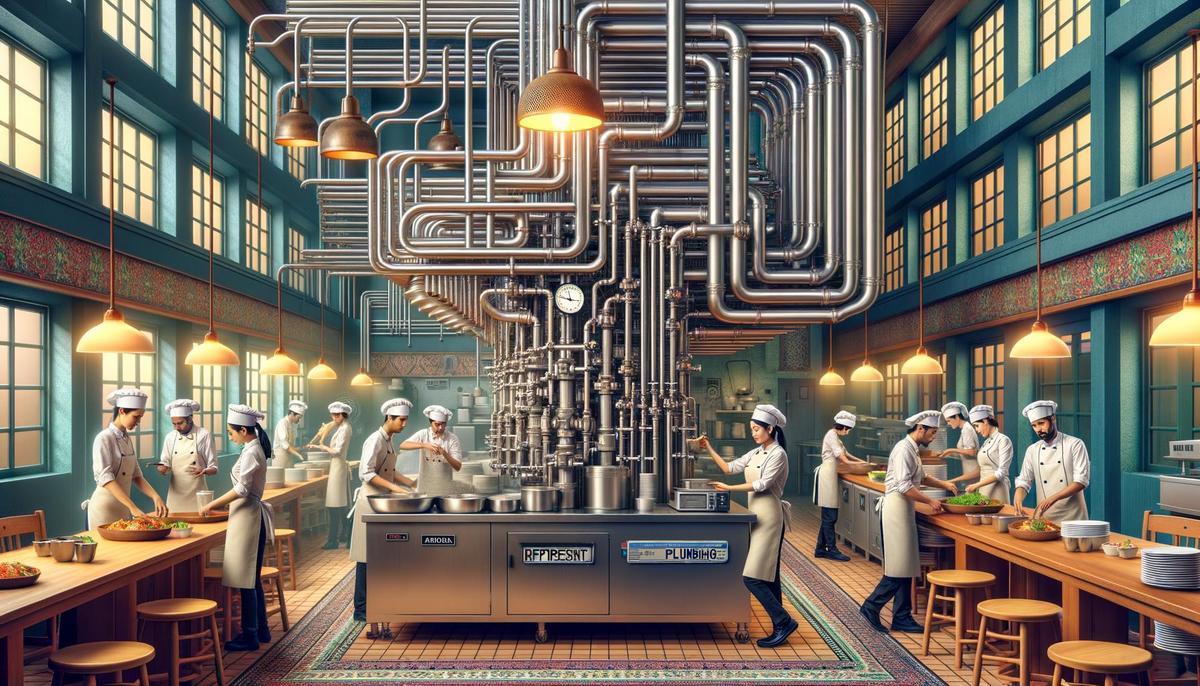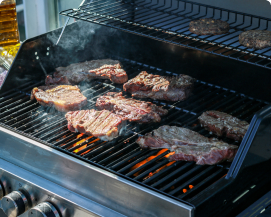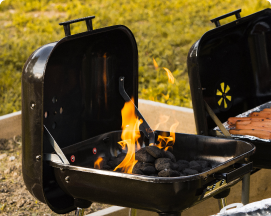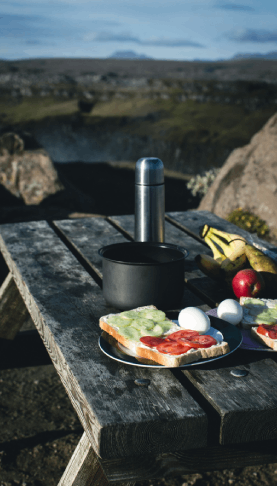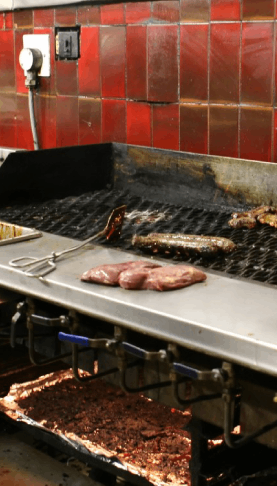If you want your kitchen to keep cooking, your bar to keep pouring, and your guests to keep smiling, you need a plumber who moves at restaurant speed. For Arvada owners and managers, that means calling a team that knows fryers, dishwashers, floor drains, grease traps, and health inspections inside and out. That is why many local operators lean on Plumbing Arvada pros at Spartan Plumbing, led by the Spartan Plumber who understands restaurant rhythms. Fast diagnosis, clear pricing, and service that fits a prep list, not the other way around.
What a busy kitchen needs from a plumber
You do not just need someone who can snake a line. You need someone who gets rushes, understands how hot water recovery affects dish pits, and knows why odor in the dining room kills covers even when everything else is perfect.
Here is how I think about it, and you can tell me if I am off.
– Fast response that respects service windows
– Preventive work that reduces surprises
– Clear communication with the GM and chef
– Documentation you can hand to an inspector without scrambling
– Fair labor and parts pricing, no guessing
Downtime is expensive in restaurants because you rarely lose only the hour. You lose momentum, rework, and sometimes a review. A good plumber helps you avoid that chain reaction.
Daily habits that reduce plumbing trouble
I like big fixes less than small habits. Maybe you do too. The kitchen team can cut most drain drama with a few repeatable steps.
Front-of-house and bar
– Empty bar strainers before peak hours and at close.
– Run hot water through glass washer drains for 1 to 2 minutes after close.
– Check floor sinks under drink stations for slow flow.
– Wipe and toss citrus pulp, do not grind it.
Back-of-house
– Scrape plates dry before dish. No rice down drains. None.
– Keep mesh drain screens in the prep sinks, always seated.
– Run the dish machine to heat before lunch. Confirm target temp.
– Mop sink grates clean each night. Food bits turn into clogs.
– Empty grease screens on wok and fryer stations after each shift.
The simplest rule works: solids in trash, grease in trap, water in drains. When that holds, calls to your plumber get less urgent and less frequent.
Grease traps: the quiet anchor of your kitchen
Grease is predictable. Not fun, but predictable. If you track it, you avoid backups on a Friday night.
How to set a pumping rhythm
– Start with the 25 percent rule. When fats, oils, and grease reach one quarter of trap volume, schedule pumping.
– Log volumes for four weeks. If you hit 25 percent in two weeks, shorten the cycle. If it takes six, lengthen it.
– Train a lead to lift the lid safely and measure.
I have seen operators push traps too long. It seems fine, until it is not. Odor creeps in, the line slows, and you pay for an emergency call plus a deep clean. That bill always feels worse than the planned pump.
Grease trap log you can copy
– Date
– Time
– Measured grease depth
– Odor present yes/no
– Comments
– Initials
Keep a simple, honest grease log. Inspectors care less about perfection and more about proof that you watch the system.
Water heaters and dish pits: the heartbeat of clean
Hot water is not just comfort. It is sanitation, plate turnover, and your health score.
Match capacity to your covers
If you run out of hot water at 7 PM, it is not always the heater’s fault. It can be sizing, recovery, or both. A plumber who works with restaurants can check:
– Tank size and recovery rate
– Gas supply and venting
– Recirculation loop integrity
– Mixing valve settings
– Scale buildup on heat exchangers
A quick check you can do today: time how long a hand sink takes to reach target temperature, then try two sinks at once. If temp dips quickly, note it. Bring that note to your plumber.
Dish machine basics you can verify
– Final rinse temp meets manufacturer spec
– Booster heater turns on and cycles
– Strainers are seated and cleaned
– Rinse arms not clogged with scale
I am cautious with dish machines because a small hiccup looks like a plumbing issue even when it is a settings issue. Still, a good plumber will help you separate the two.
Floor drains and floor sinks: the hidden choke points
Most restaurant backups start at the floor drains. Grease, starch, mop strings, fruit peel. It all lands there.
Set a weekly deep flush
– Pour a measured bucket of near-boiling water down each floor drain during off hours.
– Follow with a small dose of enzyme cleaner approved by your plumber and your local code.
– Check every P-trap has water. Top off if dry to block odor.
If odor persists, the vent stack might be blocked or the trap is siphoning. Both are fixable. Neither should be ignored.
Preventive maintenance calendar that actually fits restaurant life
Some schedules feel like they were written for a lab, not a kitchen. This one is lean and works.
| Task | Who | Frequency | Notes |
|---|---|---|---|
| Scrape solids into trash, not sink | Prep, Dish | Every shift | Post a reminder near sinks |
| Clean sink strainers and floor sink grates | Dish, Closing | Daily | Replace bent strainers |
| Hot water flush of floor drains | Opening or Prep | Weekly | Use a labeled bucket, record it |
| Grease trap depth check and log | Kitchen Lead | Weekly | Schedule pump at 25 percent |
| Dish machine rinse arm and screen check | Dish Lead | Weekly | Descale if needed |
| Whole-house pressure test | Plumber | Quarterly | Adjust PRV if pressure drifts |
| Water heater inspection and flush | Plumber | Biannual | Check venting, anode, mixing valves |
| Main drain inspection and jetting plan | Plumber | Biannual | Jet before peak season |
| Backflow test | Plumber | Annual | Keep certificate on file |
Hydro jetting vs snaking: what is right for a restaurant
Snaking clears a hole. Jetting cleans the pipe. You probably need both at different times.
– Snaking is faster and cheaper for small clogs near sinks.
– Jetting scours grease and sludge along longer runs, which helps prevent repeat clogs.
– A camera before and after helps you see the problem and decide. No mystery.
I once saw a line snaked four times in six weeks. Everyone was frustrated. The first jetting cut the call volume to zero for months. Not every case is like that, but grease build-up likes a real cleanout.
Sewer lines, camera inspections, and when to repair
Older buildings in Arvada have lines that have seen a lot. Grease, roots, ground movement, small bellies that hold water. A camera inspection gives you clarity.
– Ask for video and a written summary.
– Note distances to cleanouts and problem spots.
– Plan repairs around your slower daypart if you can.
I prefer targeted repairs. Replace only what is cracked or sunken, then schedule routine cleaning. Full replacement can be right, but not always.
Restrooms and guest experience
You can plate food like a champ, but a slow, smelly restroom will cancel a lot of goodwill. Keep restrooms simple and tough.
– Choose commercial flush valves, not residential styles.
– Set auto faucets to practical run times, not stingy.
– Use traps with cleanouts on lavs.
– Post a quick check card for hourly restroom walk-throughs.
If you have recurring smell even with clean floors and drains, ask your plumber to check wax seals, venting, and any dry traps. It is often a small fix.
Water quality: scale and taste matter
Scale kills heaters and dish machines slowly. It also clouds glassware.
– Install and maintain softening or treatment based on your water report.
– Descale on a schedule. Record dates.
– Check ice machine filters and change them when the pressure drop increases.
I am not a fan of changing filters only by time. Check pressure and look at ice clarity too.
Cold weather precautions in Arvada
Cold snaps happen. Frozen lines hurt. A few checks each fall go a long way.
– Insulate exposed lines in delivery areas and near exterior walls.
– Install frost-free hose bibs.
– Keep crawlspace vents closed in winter if that fits your building.
– Have your plumber show you the main shutoff and test it. Knowing that location saves minutes when you need it.
Teach your opening manager where the main shutoff is and how to use it. In a burst, seconds matter more than any checklist.
Building a simple incident playbook
You cannot plan every surprise, but you can plan the first five minutes.
Clog during service
– Pause use of the affected sink or station.
– Clear visible strainer debris.
– Try a plunger at the floor sink, gentle, 10 strokes.
– If no improvement, call your plumber and note the station and time.
– Redirect prep to backup sinks.
No hot water
– Confirm gas or power is on.
– Check heater status lights.
– Move to disposable service ware if plates cannot be sanitized.
– Call your plumber and document time and temperature readings.
Leak under a sink
– Place a bus tub to catch drip.
– Shut local angle stop if reachable.
– If leak is on a main, use the building shutoff and call your plumber.
Keep these on one laminated sheet. Keep it near the manager’s log.
How to choose the right plumber for a restaurant
Picking a plumber looks simple. Then a rush hits and you find out they only schedule next week. Ask direct questions.
– Do you support restaurants and after-hours calls?
– What is your typical arrival window during lunch and dinner service?
– Do you offer camera inspections and jetting, not just snaking?
– Can you provide itemized estimates before major work?
– Will you document repairs with photos for my records?
You will get straighter answers to clear questions. If you hear only vague promises, keep looking.
Why many Arvada operators call Spartan
I care about speed and clarity. From what I have seen, the Spartan Plumber group keeps both in focus. They know restaurant schedules. They speak plainly about parts and labor. And they handle the mix that kitchens need, from a quick fix on a line to full cleanouts and camera work.
Could you use another company? Of course. If you already have a strong partner, stick with them. If you are still searching, try Spartan Plumbing and ask them the questions above. See if their answers match your needs. If not, push back. That is fair.
Menu-driven water demand: a quick way to size your needs
Different menus place different loads on your plumbing. A ramen shop, with starch and long simmering, stresses drains in one way. A steakhouse, with high dish volume and bar glass, stresses hot water and glass rinsing in another.
| Concept | Main Stress Point | Watch This | Helpful Upgrade |
|---|---|---|---|
| Fast casual fry-heavy | Grease load | Trap fill rate, floor sinks | Scheduled jetting before weekends |
| Full service with bar | Hot water and glass clarity | Heater recovery, water treatment | Booster tune and filtration |
| Bakery or pasta | Starch and flour | Drain screens, trap cleanings | Extra interceptors on prep sinks |
| BBQ and smokehouse | Grease and solids | Scrape discipline, line scouring | Larger trap and stricter logs |
I am aware this is not perfect. Kitchens are messy, and menus change. Use this as a starting point, not a rulebook.
Tracking the true cost of a plumbing failure
If a main drain backs up at 6:15 PM and you seat 120 per night, what do you really lose? It is not just checks.
– Lost covers during repair window
– Discounts to keep guests happy
– Overtime for staff who stay late to catch up
– Comped items or refunds
– A possible review that slows sales next week
Write a quick estimate after each incident. Painful, yes, but helpful.
Documentation that helps you pass inspections
Health and safety visits get smoother when you have proof of care. Keep a small binder or digital folder.
– Grease trap logs and pump receipts
– Water heater service records
– Backflow test certificates
– Camera inspection reports and photos
– Jetting and snaking invoices with dates
If the inspector asks for proof, you hand it over. No scrambling.
What your team can do vs what your plumber should do
It is tempting to let your team fix everything. Some tasks should be left to a licensed pro.
Team tasks:
– Clean strainers, grates, and screens
– Basic plunging at floor sinks
– Hot water flushes and enzyme doses
– Visual checks and logs
Plumber tasks:
– Jetting and camera inspections
– Trap pumping coordination if required by code
– Water heater repair and replacement
– Sewer line repair and location
– Backflow testing
If the same issue happens three times in a week, stop and call your plumber. Repeats are a sign of a bigger blockage or a design problem.
Seasonal checklist for Arvada restaurants
Winter and patio season bring different stress.
Before patio season
– Check hose bibs and quick connects for leaks.
– Confirm floor drains near patio door are clear.
– Test bar glass washer drains after moving seasonal equipment.
Before winter
– Add insulation to exposed runs near doors and loading bays.
– Walk the roof and check vent terminations for blockages.
– Test heat in mop rooms and dish areas, keep them above freezing.
When you need emergency help
If water is rising or hot water is out during service, you need a fast call. Keep a one-page vendor sheet by the manager’s desk with:
– Primary and backup plumber numbers
– Address, nearest cross street, and special access notes
– Location of cleanouts, main shutoff, water heater room
– After-hours contact for landlord if you lease
Then, when you call, describe the symptom, not just the location. For example: “Floor sink by line 2 overflowing during dish cycle, started 15 minutes ago, we paused dish, other floor sinks moving slow.”
This helps the tech walk in with the right gear.
Common myths I still hear, and what is closer to the truth
– Myth: Enzyme cleaner can replace pumping. Reality: Enzymes help, they do not remove bulk grease from traps.
– Myth: Bigger water heater always fixes running out of hot water. Reality: Recovery and recirc loops matter as much as tank size.
– Myth: Snaking once a year is enough. Reality: If you cook a lot of grease, jetting on a schedule can save you from mid-service stops.
I am not against home remedies, I am just wary of them in a commercial kitchen. Stakes are higher.
Making vendor communication easy
Take five minutes and send a simple facilities sheet to your plumber. It will pay you back during a rush.
– PDF of your floor plan with plumbing fixtures highlighted
– Notes on oddities, like a hidden cleanout or a floor sink behind a cooler
– Typical closed days and best service windows
– Contact tree for GM, chef, and opening manager
And ask them to store it under your account name. Next visit gets faster.
What I would expect from a good plumbing visit
You cannot manage what you cannot see. Here is a normal flow I like.
– Tech arrives and listens to your timeline.
– Quick visual check of nearby fixtures to confirm the symptom.
– Clear explanation of likely cause and options, with a price range.
– Work begins, with containment to protect prep spaces.
– Before and after photos or video if a camera or jetter is used.
– Brief summary and care tips, plus next steps if needed.
If a visit feels rushed and vague, ask for details. It is your building and your money.
Small layout tweaks that reduce clogs
You might not need a remodel. Sometimes moving a trash can or adding a screen does the trick.
– Add a second trash scraper near the busiest prep sink.
– Raise the floor mat edge so solids cannot slide into drains.
– Use labeled bus tubs for scraping, one per station.
– Place a laminated “No rice down drain” sign at eye level by dish.
Simple, almost boring, but effective.
Training that sticks
New hires are often the ones at the sink. Make plumbing care part of day-one training.
– Short explainer from a lead: where traps are, what goes where
– Show the grease trap location and the log
– Explain why clogs hurt tips and breaks
– Hand them the daily sink and floor drain routine
You will not get perfect compliance, and that is fine. You just need better than yesterday.
A quick word on costs and quotes
Ask for itemized quotes on larger jobs. Push for line items like camera inspection, jetting, materials, and labor hours. You can compare apples to apples that way. If a number looks low, ask what is not included. It is okay to be direct.
Why this matters to people who love food
If you read cooking blogs, you care about craft, speed, and clean execution. Plumbing sounds boring next to a perfect sear or a bright chimichurri. I get that. But clean plates, clear glasses, and a fresh room are part of the meal. The best restaurants make that invisible work look easy. It is not magic. It is a plan, and a partner who shows up.
When to call in the pros vs trying one more fix
You might be tempted to keep plunging or pouring drain cleaner. I think that is risky in a commercial kitchen. Chemical cleaners can harm lines and traps, and they rarely touch the real blockage down the run. When water is rising, skip the gamble and call. Protect your guests, your staff, and your gear.
A simple starting plan for the next 30 days
If you want quick wins without turning your world upside down, try this.
– Pick one person per shift to own drain screens and floor sinks.
– Start a weekly grease trap depth log. Put it on a clipboard.
– Schedule a camera inspection of your main line if you have not done one in the past year.
– Ask a plumber to quote jetting before your next busy stretch.
– Time your hot water recovery during a test rush.
Five steps. Nothing wild. You will learn a lot fast.
If you are in Arvada and need help
Keep it simple. Ask for a visit from the team at Plumbing Arvada leader Spartan Plumbing. Tell them your menu, your peak hours, and your last three issues. See what plan they suggest. If you like it, book service during a time that works for your kitchen. If not, you can compare proposals. Either way, you move from guessing to a plan.
The best plumbing plan for a restaurant fits the menu, the building, and the team. Copying your neighbor’s plan can be helpful, but your data beats their guess.
Questions and answers
How often should I jet my main line?
Most full-service kitchens benefit from jetting twice a year. Heavy grease kitchens may need quarterly. Use your call history and grease log to pick the cadence.
Do I need a bigger water heater or a faster one?
Sometimes bigger helps, sometimes not. A plumber can check recovery rate, loop balance, and mixing valves. If recovery is slow, a better heater or booster can fix it without a larger tank.
What should I do when a floor drain smells?
Add water to the trap to seal odor. Clean the grate and cup. If smell returns, have a plumber check venting and for a dry or siphoned trap.
Can I pour hot grease down the drain if I run hot water?
No. Grease cools and hardens farther down the line. Put grease in a proper container or trap.
How do I know if my trap needs pumping?
Measure grease depth. When it hits about one quarter of the trap’s volume, schedule a pump. Keep a simple log.
Is snaking enough for a restaurant line?
Snaking helps for short clogs. For greasy lines, jetting cleans the pipe wall and reduces repeat clogs. Use a camera to confirm.
What information helps my plumber fix problems faster?
Share the symptom, station location, time it started, what you tried, and what else happened nearby. Photos help. A floor plan helps more.
Who should I call in Arvada for restaurant plumbing help?
A lot of operators call Spartan Plumber at Spartan Plumbing. They understand kitchen flow and can set a plan that fits your service windows.


